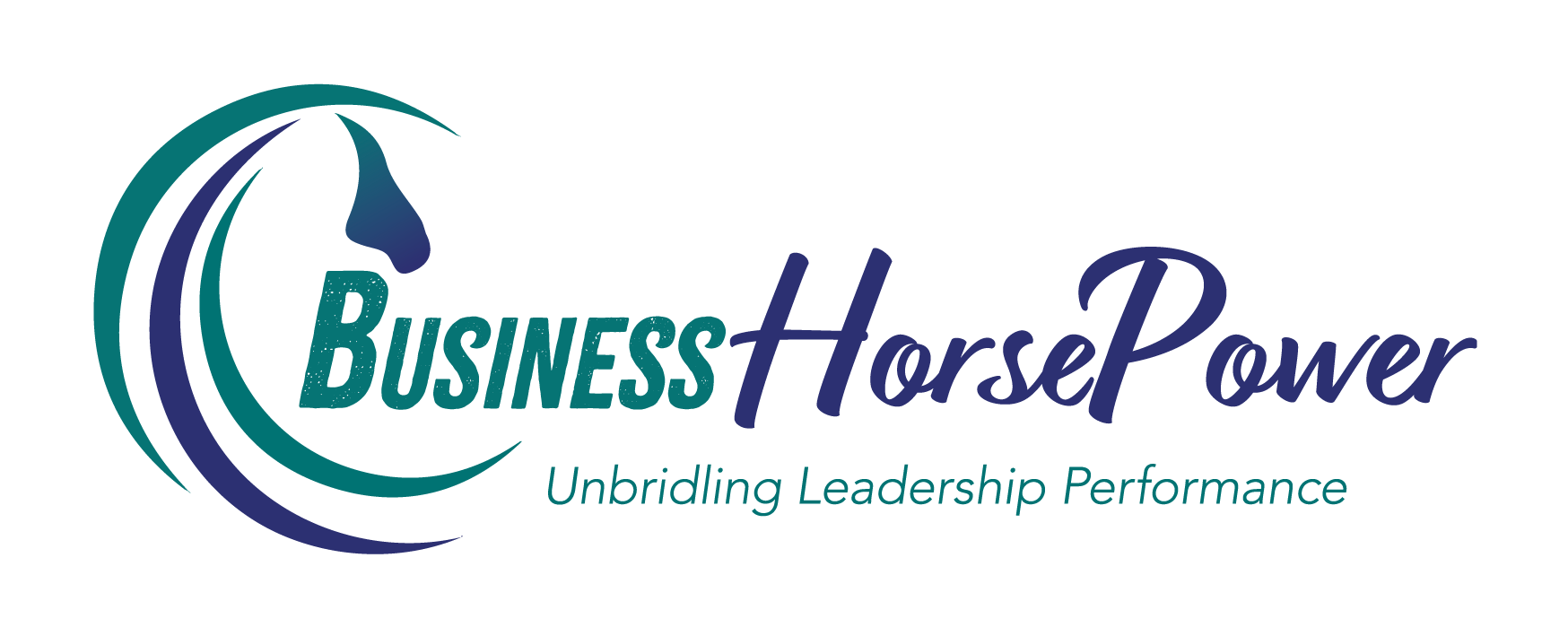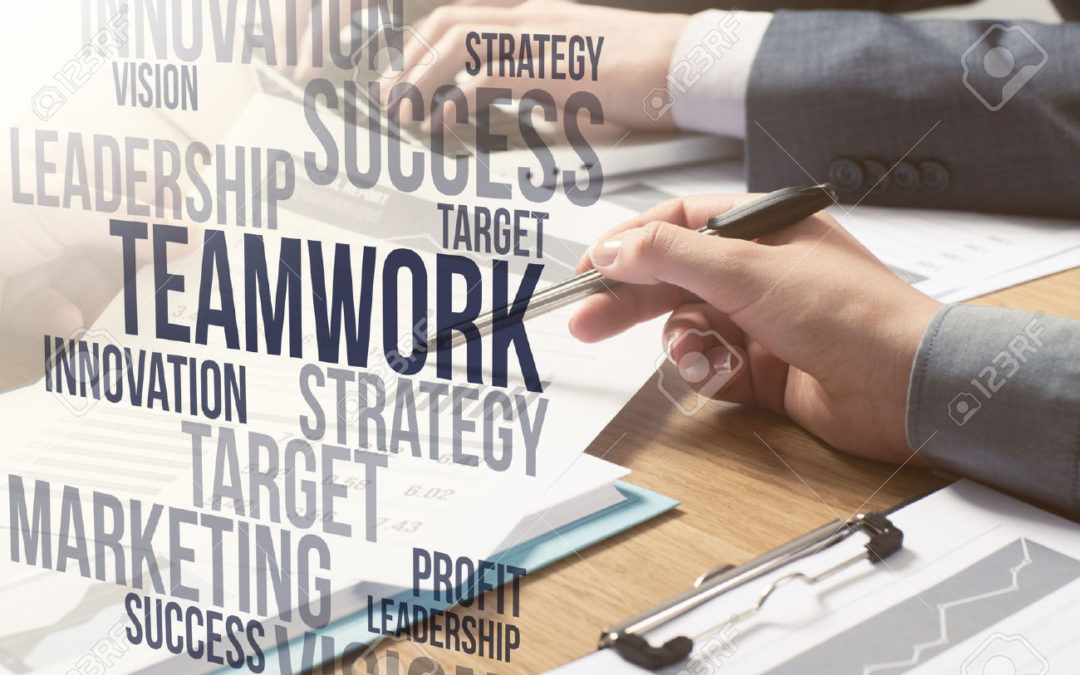
by Julia Felton | Jun 25, 2016
Having led and worked in teams for more than 30 years, I thought I’d share a few key ideas that I have learnt that will you get a team of people to work more cohesively and effectively together. It is particularly effective to do some of these with a new team or group that about to embark on a project together. It can really pay dividends in the smooth running of the project.
1. Enable Them To Build trust
In my book The Alchemy of Change I reveal how trust is the glue that holds a business together. It is that unseen factor in business that makes all the difference. In his book on the five dysfunctions of a team Patrick Lencioni explains i it is really important for a team to develop ‘vulnerability-based’ trust. This means that they need to share things and understand more about each other. Personally I love using Talent Dynamics which is an assessment tool which helps team members learn more about themselves and their other team members in a non-threatening way. And of course when you understand the drivers of your other team members communication can be enhanced. Also by every team member focusing on their strengths the group collective is enable to achieve greater productivity and profitability than the sum of the individuals. This is the power of collective teamwork.
Another way to help team members build trust is by allowing them to share stories with each other about when they were younger. Here is a format that I got from Larry Reynolds, which I have used many times to great effect.
- Think of a time when you faced some kind of challenge. It can be a challenge big or small, and it can be something that happened recently or many years ago. Challenges you faced as a child or young adult can make especially powerful stories. The only proviso is that things worked out alright in the end, and that you are happy to share this experience with others.
- How did you feel when you encountered this challenge? It’s probably something on the spectrum between concerned and terrified.
- What unexpected help came your way? Maybe you drew on some inner resources, or maybe someone else helped you.
- How did things work out in the end?
- What did you learn from this experience?
- What does that say about your values and beliefs as a person now
2. Help Them Get Comfortable With Disagreeing
It’s really important, if a team are to make great decisions that they are comfortable with a level of conflict and disagreement in the team. Give them some tasks to do that involve disagreement and negotiation. Set a task where a decision needs to make and carefully facilitate a discussion where when a person states a point of view or puts forward an idea, at least two people must say specifically what they like or agree with and then at least two people must point out potential issues, flaws or reasons that they disagree. When a team can get comfortable separating the ideas and concepts from the person, they will be able to make better decisions. Also if issues are discussed properly, teams are able to commit to decisions that they don’t necessarily fully agree with if they can understand the rationale behind the decision and they feel that they have been fully heard.
3. Help Them Get Comfortable Giving And Receiving Feedback
Giving and receiving feedback effectively will enable the team to grow and develop faster and will also enable them to hold each other accountable for behaviours and results. Enable them to practise giving real face-to-face feedback by doing an activity such as ‘warm seat’:
A ‘warm seat’ is a little bit like a hot seat but cooler! Group members prepare questions to ask the rest of the group about themselves. These questions can be positive e.g. what is great about working with me? Neutral e.g. what is it like working with me? Or negative e.g. in what ways do I sometimes annoy you? Group members take it in turns to sit in the warm seat for a pre-arranged amount of time e.g. five minutes and ask their questions. Group members answer the questions (which can be general or specific) as specifically as possible with examples. They can only answer questions posed and at any time the person is free to vacate the warm seat if they’ve had enough.
4. Set Up A Team Charter
Another practical thing that a team can do is to set up a team charter, which includes agreements about ways of working. Get clarity first on the team’s vision, purpose and values. Then get clear about people’s different roles within the team by defining individual responsibilities and goals through referencing their strengths using Talent Dynamics. They can then get into identifying appropriate behaviours for team members, communication and decision-making processes and agreements about the use of resources. Encourage the team to put forward ‘rules’ that they can all sign up to, for example, ‘we get back to e-mails from each other within 24 hours’ or ‘when we disagree, we express this calmly and openly’ etc. Once this charter is established, team members can be encouraged to hold each other accountable for both behaving in line with what has been agreed and for their responsibility areas. This should happen as part of every team meeting.
5. Practice Being A Real Team By Giving Them A Challenge To Complete
Overcoming obstacles to achieve a goal is something that we typically get all teams engage in during my leadership with horses workshop. In this exercise the team members set the goal they wish to achieve and then build obstacles that could represent things that could prevent them from meet the goal. They then get introduced to a new team member (a horse) and have to all work together to get over the obstacles and achieve the goals. The team get all kinds of insights into how to communicate effectively, the different positions of leadership and how to co-operate and collaborate together to achieve success. The celebrations that occur when the team is successful are incredible and every team has always gone back to the workplace with more confidence and certainty about their capabilities.
Since the team has had an embodied experience of how to work successfully together this physical or ‘muscle’ memory stays with them and also make them want to achieve that feeling of working in harmony and being jointly accountable again!. Once people feel what it’s like to truly work as a team and achieve positive results, they usually want to do it again!
To learn about how to develop your high performance team please connect with me for a complimentary conversation and lets explore what’s possible.
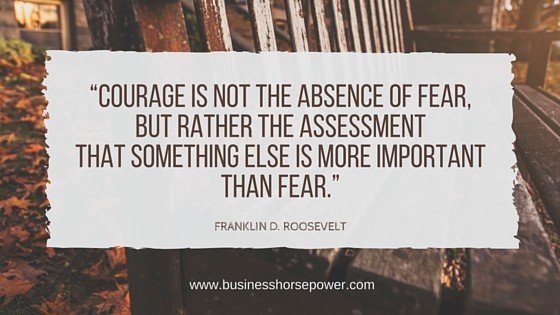
by Julia Felton | Jun 22, 2016
Tomorrow marks a really important day for the future of the UK with the upcoming referendum on Europe. There has been so much said on the subject and I’m not hear to preach to you on how you vote, but rather my message today is please make a decision and take action to vote for whatever party you deem aligns with your values.
So often in life we fail to take action because we are afraid of the consequences. We are afraid of what will happen, how will others react, what will they think. But the one thing I know to be true is that when fear prevents me from taking action I always feel resentful after the fact. I spend ages wondering what would have happened if I had been courageous enough to do what I wanted to do.
And I don’t just mean for the big things in life. Often times when I look back on my life taking courageous action was easier with the bigger decisions in my life. Like going to live in America or moving to Yorkshire. Sure these massive life changing events were scary and I had some fear and anxiety about what I was doing but I was able to rationalize my decision making by saying that I could always move again if I didn’t like the outcome.
However, what I have observed is that it is often the fear associated with smaller decisions in life that really hold me back. For example, the fear that overcomes me when I have to pick up the phone and make a call to a new client. As it is such a simple act I often overlook how failing to take that action could impact my business. And why didn’t I do it. The simple answer is because I was afraid of the outcome – afraid of what the potential client might say, afraid they might not like me. My fear prevented me from being courageous and potentially experiencing a great conversation and enrolling a new client.
The quote above I think so succinctly summarizes how we need to act in life. It’s easy to overcome fear and be courageous when what we are doing is really important to us. When we are doing work aligned with our purpose, although the fear might still exist, our courage to take action is greater and so we in the words of Nike – Just Do It.
So next time you feel fear just step back, review the situation and see how being courageous and taking that action will get you closer to your goal and help you fulfill your purpose.
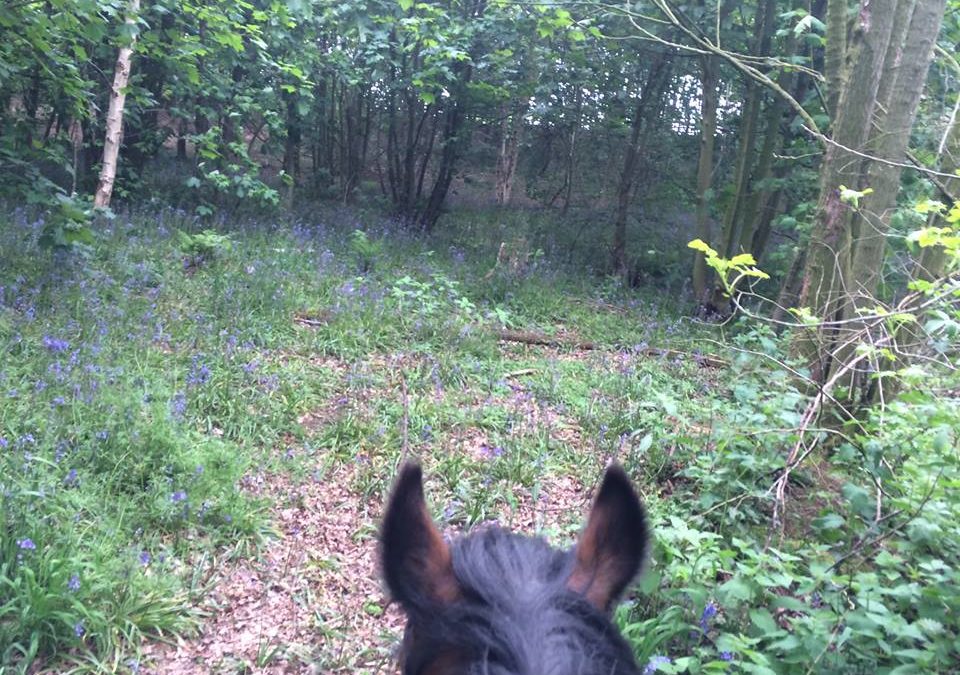
by Julia Felton | Jun 19, 2016
“Judge a man by his questions rather than his answers.” Voltaire
If you don’t know the answer, ask better questions. When we get stuck it is often because we are looking at the challenge through a single lens. We can only see one perspective on the issue and therefore we can’t find the answer. When you learn to ask better questions you are able to open up a raft of other possible options and in time a solution can just magically appear.
I remember a number of years ago using this technique when deciding whether I should keep my horse Charlie. I had him on a three month loan contract and the three months was coming to an end. I just couldn’t decide what to do, as the two options presented to me were that I should buy him or else give him back. I wasn’t happy with either of these options. I was stuck in what decision I should make. I was getting really frustrated.
At the time it didn’t occur to me that there might be some other options. There are always options because I was looking at the situation through my lens – the lens of self. What I had failed to realise was that there were at least two other perspectives. What if I looked at the situation through the lens of Charlie’s owner – the lady I had him on loan from. What would be her thoughts?. Or what would be the observations of a friend or an outsider looking in on the problem. When I looked at my situation through these two different lenses I was able to ask much better questions and so find new solutions.
From the lens of the Charlie’s owner I was able to realise that they really wanted him to have a good home and that was more important than the sale. I also realised that they didn’t really want him back as that would have cost them money. Although they would like to sell him it was infact better for them not to have him back. From the perspective of observer I appreciated that there was a solution that was mutually beneficial to both of us. We could extend the loan term and see what transpired. Extending the decision making process was important to me because at the time Charlie had been suffering from some injuries and I was not sure what the outcome would be. I didn’t want to buy him only to discover that the injuries would not heal, but at the same time he had a big heart and I knew that I could really help him.
This way of looking at challenges and asking better questions is called Positions of Empowerment, and it really helps give a different perspective on all situations. Try it now. Imagine or draw on the floor a triangle. Make the apex the position of the observer. The left hand bottom corner is the perspective of self and the right hand corner the perspective of other. Now literally step into each of these positions and see what questions emerge, and therefore what answers come up.
When I did this exercise about my ownership of Charlie what came up would be that I could ask the owners for an extension to the loan period, That way I could get Charlie through his injuries and then make a sensible decision to buy him based on the outcome. This was never something I had initially considered. Before doing this exercise I had foolishly assumed that the only two options were to buy him or return him. And yet there are always other alternatives if we just stop, ask better questions and then reflect on the outcome to these.
When we ask meaningful questions, we step back so others can step up and think things through for themselves. The art of questioning enables dynamic and critical think-through. Finding relevant questions uncovers and reveals richer, more relevant answers.
One of the challenges is that we have often been brought up not to question things – I know I was – so being curious is a habit that I have had to develop. As the Chines Proverb goes:
“He who asks a question is a fool for five minutes. He who does not ask a question remains a fool forever.”
So here are 10 ways you can stimulate greater appreciation for asking questions:
- Learn to listen actively; don’t just wait to be heard.
- Ask yourself while listening, “What’s trying to happen here?”
- Supportively challenge assumptions without being presumptive.
- Question what’s behind the issue being focused on.
- Gain buy-in during meetings for specific time to explore alternative points of view
- If asking questions appears to irritate, seek to understand the irritation.
- Encourage thinking that isn’t based on assumption.
- Understand how others think and how they approach problem solving.
- Ask, “What questions should we be asking that we’re not asking?”
- Don’t be afraid to appear ignorant?
Now in my case with Charlie I did extend the loan agreement for another six months. Charlie’s injuries did not improve. It turned out he has arthritis in his joints from his racing career and was technically lame on three legs He was never going to be riding horse I had hoped he would. When I learnt this I spoke with the owners and was able to purchase him for the nominal sum of £1, because although he was not rideable I knew he would be an excellent horse for the leadership work I do with horses.
So as a result of asking better questions and getting a different perspective on that situation I was able to save myself a lot of money and heart ache by not having paid full sales price for Charlie and then feeling resentful when he was diagnosed with arthritis. In fact we created a win-win situation where the owners no longer had to care for him and I had a horse that I knew could add amazing value to my leadership programmes.
So what better questions can you ask today? Be curious and you might be really surprised by the results.
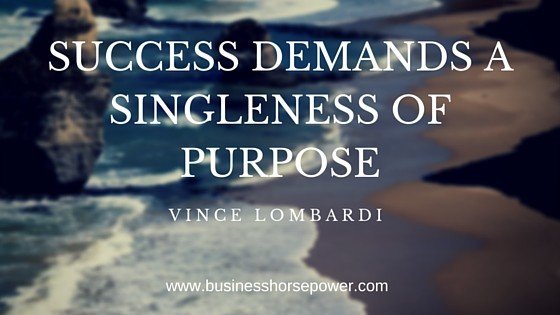
by Julia Felton | Jun 15, 2016
Wednesday Wisdom has come around again and I am delighted to welcome a bunch of new people to the Business HorsePower herd. These are all people that I have had the honour of meetings whilst I have been attending exhibitions, conferences and networking events over the last week. They are all people I have been sharing my purpose and vision for my company with.
So why is it imperative that you have a purpose in business? For me purpose is the rocket fuel that keeps my business going on the days I feel it stalling. It is what keeps me motivated and inspired to do my best. It is what drives the strategy of my business and helps me formulate the decisions I make.
When you are unclear on your purpose and become disconnected from the raison d’etre you went into business then your business can often feel like a rudderless ship, going round and round in circles. You don’t know which path to take because you don’t know where you are going.
After all we live in a world where we have so many choices – arguably way too many – and that is a problem. There is always some bright, new shiny object that you can pursue, some new business venture you can become involved it, some new product you can create. But none of those activities will move your business forwards and help you achieve and sustain success unless they are strategically aligned with where you want to go.
This is why every business needs a routemap (a strategy) of where they are going. Without this clarity who knows where you will end up. So what is a strategy?. It is a plan for obtaining a MAJOR result. It is a plan for enabling you to achieve a quantum leap in your business and it marks the milestones that need to happen to get you there. This is different from a business plan or a load of tactics and to do lists.
Now, if the thought of creating your strategy is bringing you out in a sweat, don’t worry, as I have an agile, innovative solution. Do you think you would be inspired if we could distill your strategy down to just one page – after all if it doesn’t fit on one page its clearly too complicated!. Plus, if you’re like me you will never look at it again.
Creating a single page strategy plan for your business success is a challenging task but one that will reward you 10 times over. It will force you to think differently about your business and prioritize the activities you do, because everything will be linked to your purpose. It will help you focus and stop you getting distracted by what I loving call Entrepreneurial ADD.
So if you a ready to roll your sleeves up and create your strategy on a page then give me a call, and let me help you. This one thing has transformed my business and my life more than anything else I have invested in. It is definitely the one thing that has made all the difference.
I’d love you to let me know if you have a business strategy and if not why not, maybe I can help you.
Wishing you another amazing week.
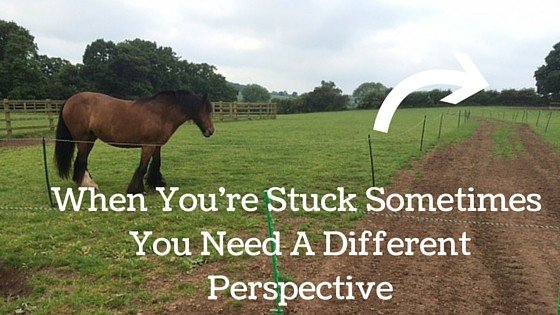
by Julia Felton | Jun 12, 2016
One of the things that I have learnt in business is the value of getting another perspective on a situation. All too often business owners are so stuck in their business and when you are deep in the woods, it is difficult to step back and get an aerial view of what is really going on in your business.
In my book The Alchemy Of Change I likened this situation to being on a ship. When you are stuck under the hatches, below deck you cannot see where you are going and what is coming up on the horizon. Also when you are in this place sometime everything can seem really difficult and yet just one small shift can make all the difference. Jeff Olsen refers to this as the Slight Edge. It is that tiny change that helps everything accelerate to the next level.
This morning my pony Bracken so ably demonstrated this fact that I felt compelled to write about it. You see during the winter the horses field got really wet and so every time the tractor took hay out to the field it left some serious tyre tracks. In some places the ruts were 18 inches deep. So in effect I had a field with these two channels running through the middle of it. Fast forward to last week when finally we were able to roll the field and dig up the tractor ruts and then reseed the field in this area. The result is that there is a strip in the middle of the field which is roped off so the horses can’t walk on it. The challenge is that this means that the horses have to walk around this to get to the gate in order to get out of the field.
So this morning, with a bit of help from me, Charlie, Toby and Thistle figured out they had to follow me up to the top of the field and then walk down to the gate, but bless her, Bracken is all confused. Stuck on the wrong side of the fence she can’t get out. I can see her getting frustrated and annoyed as her friends leave her and yet all she had to do was turn round, walk 100 yards in the other direction and then she could get over to the other side of the seeded grass patch and so join us and come in. But instead of doing this she just stayed there, stuck and getting really frustrated She couldn’t see what was so obvious to everyone else.
So here are the three reasons I learnt from her on why you need a different perspective:
- Stuck in the depth of what was going on Bracken continued to do what she had always done and yet this time she was not getting the results she wanted. She couldn’t get out of the field. And yet in business all too often we can get stuck doing the same thing time and time again and there comes a point where this action is no longer serving us. Bracken needed by different perspective and coaching to show her there was another option.
- Often it is only a minor change that needs to happen to catapult your business to another level. Bracken basically had all the elements in place to get out of the field. She was just approaching the situation in the wrong order. Once she realised that she had to go backwards to go forward then she flew into the new field. And this is also what happens in business. Often we need to take time out to reflect, take stock and re-group before we can move forward.
- Once Bracken had been shown the new way she accelerated with massive momentum towards her goal. And this is what i see happening in business too. Once the business owner has really clarity on where they are going, and is shown a path of how to get there, there business can take off exponentially. Its all about ensuring everything is aligned and then the business will flow effortlessly, much like Bracken when she galloped off to find her friend.
So if you’d like to get a different perspective on where you are in business and how to get to the next level, then please connect with me for a personal strategy consultation where I can help you map out what the problem is and one simple action to can take to get back on track.
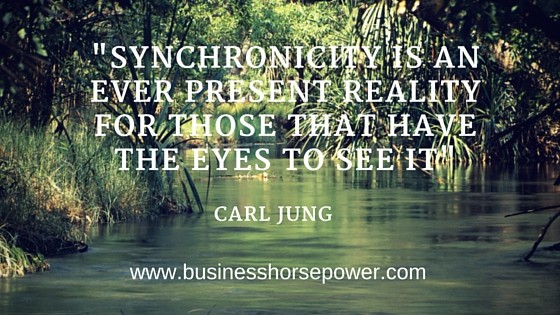
by Julia Felton | Jun 9, 2016
A number of people have recently been asking me why I moved to Yorkshire. After all I could have gone to live anywhere and yet Yorkshire became my calling. I’d love to say I had a concrete plan but that is simply not true. I ended up in Yorkshire because the same person’s name came up four times in a row as a place where I could keep my horses. A place that would resonate with my values and that would provide an amazing base for me to run my leadership workshops with horses. And so I listened, came and checked out the place and the rest as they say is history.
The dictionary defines synchronicity as a series of co-incidences and that is certainly what happened to me. I had always loved Yorkshire from a brief time when I worked up here and then every time I visited my friend Sarah-Jane and her family I loved it even more. So when I had the opportunity to relocate Sarah-Jane suggested Yorkshire and I was open to that.
However, it wasn’t just about moving me. In fact that bit was pretty simple. The more complex piece was finding somewhere for four horses, where they could live out all year, but still have some stabling to come in when they wanted. Plus it had to be a venue that was open to my clients coming along and partnering with the horses to develop their leadership skills. My wish list was long and to some degree potentially unbelievable.
I shared with a number of people what I needed and the same name kept coming up. Initially from an old school friend, who I had not seen in 20 years. When I met her at a reunion she immediately thought I was a horse whisperer and asked me if I knew her friend Sarah. I didn’t directly although it turned out Sarah had assessed my videos when I was studying for my Monty Roberts Certificate in Natural Horsemanship some 5 year earlier. Spooky. And then Sarah’s name came up again a couple of times so I felt compelled to come and meet her. It was Christmas 2012 and of all the yards I went to see Sarah’s yard (which is usually full) was the only one that could accommodate all my four horses and was happy for me to work out of her venue. Plus, as anyone who has been to one of my events will know, it is a magical place and their philosophy of horsemanship so resonates with my own.
The thing is that I would never have found this place if I had not be present and open and really listening to what was going on around me. If I had not listened to my intuition I would not have ended up here. And yet this is the perfect place to be.
And if I stop and reflect on my life there have been loads of these co-incidences. What initially appear random events all aligning to show me the path to my success. The challenge is that often we are so embroiled in our day to day activities that we never stop and see the opportunities right before our eyes.
So today, I urge you to slow down, become present and really see what is happening around you, as there are clues everywhere. You just need to look and then join the dots.
I’d love to hear from you on how synchronicity has shaped your destiny and the biggest lessons you have learned. I truly believe that everything is happening for a reason. It is just up to you to listen and the take action.
Have an amazing synchronistic week.

by Julia Felton | Jun 1, 2016
Wow, can you believe that today is the 1st June. Where has the year gone. At this time of year I like to take stock of what has occurred and make sure I am on track for the rest of the year. I take time to review what has worked – so I can do more of it – and what hasn’t so that I can refine and amend it. Only by reviewing what has happened are you in a place to make some different decisions about the future course.
And what do you do if you’re not on track? Then I urge you to consider this. Are you simply interested in the goal or are you committed, and I mean really committed to it? I’m interested in losing weight and eating more healthy food but am I committed. If I’m honest no, or else I wouldn’t be eating chocolate bars and take-away meals.
So how do we become committed to something? We ensure that we have motivation for achieving that goal, something that pulls us forward day in and day out. Something that inspires us to get out of bed every day and take action, not because we have to but because we want to.
In my experience I only really get committed to a goal when I have a good reason why I want to do it – a purpose – and that reason is usually something bigger than me. When you can get clear on your purpose then taking action becomes easy because everything is aligned and congruent.
It is as important to have a clear purpose in business as it is in life. Without either you can feel like a rudderless ship that is going round in circles and never getting anywhere. And what a massive waste of time, energy and resources that is.
There are a number of tools that you can use to help get you clear on your purpose but what is imperative is that you write your purpose and goals down. Research by Gayle Matthews from the Dominican University has discovered that writing down your goals increases your chances of success by at least 50%.
This is one of the reasons why Strategy on a Page works so well. It helps you distill onto one page your purpose, values, visions and also the strategic goals and Business Growth Indicators for your business. And by having clarity, focus and accountability clients get incredible results. So if you’re prepared to take action and be committed to your own success, please connect with me and I’ll share how Strategy on a Page could really help you move your business to the next level.
So until next time stay committed to your goals and achieve massive success.
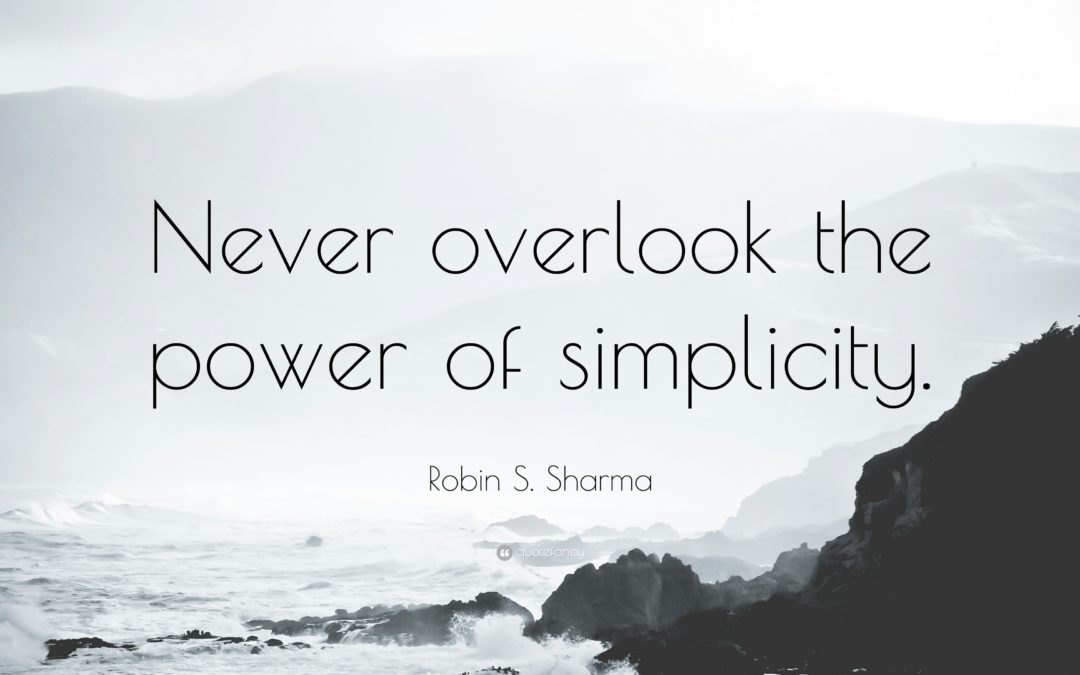
by Julia Felton | May 25, 2016
Recently I have been thinking about the power of focus and simplicity and increasingly I am realising that these are fundamental keys to success. This stark realization was brought about because it became increasingly clear that my clients and prospects didn’t really understand what I could do for them. Some people saw me as a horse trainer, others as a people trainer through horses, others as a fluffy horse gal but curiously very few people saw me as a credible business consultant, mentor and coach who could seriously help them develop and grow their business to the next level. Ouch. That was a tough pill to swallow.
And yet I am all those things. Yes, as many of you know I am passionate about helping leaders and teams develop greater self awareness through partnering with the horses to grow their leadership, teamwork and communication skills. However, what fewer people know about me is that I have created, grown and then sold a multiple million pound business. I’ve seen a business through the entire product life cycle – from inception to disposal – and that a pretty awesome thing to do. I’ve negotiated strategic joint ventures with some global players and done commercial due diligence of potential partners. I’ve designed the software and operating requirements for at least three technology platforms and worked with the IT team to translate my ideas into practical solutions that met the needs of both my clients and my team members. Along the way it also seems like I have become somewhat of an expert on the practical implementation issues of big data. Wow, that’s a lot so its no surprise that people struggle to articulate what I do.
And the challenge of all this is that when your clients can’t articulate what you do, they simply can’t recommend you to others, even if they might want to. So today I have decided to simplify what I do, so that everyone is clear on the benefits of working with me. So quite simply I am a business improvement specialist. Not very sexy but it does what it says on the tin. I help you improve your business. Now that may mean that I help you improve your business systems or processes or it might mean that I help you develop your team members and your leaders. But in whatever way I am serving you – with the vast array of tools in my tool box – the net result is more productivity and profitability, and what business owner wouldn’t want that.
The need for simplicity and clarity in our communication is more important than ever especially due to the overload of information that everyone is literally drowning under. It is being reported that you now have less than 8 secs to make an impression. If people don’t get what you do in this time frame then forget it. So you need to make sure that your online profiles, websites and other social profiles are all aligned and congruent so that every time someone sees you they get the same message.
Making things very simple is actually very complex and this is summed up well by Steve Jobs when he said in May 1998. “That’s been one of my mantras — focus and simplicity. Simple can be harder than complex: You have to work hard to get your thinking clean to make it simple. But it’s worth it in the end because once you get there, you can move mountains.”
What I have come to realise is that I had a limiting belief that if something was simple it was not worth doing. So I’d been making my business about as complicated as I could make it. Having loads of different products, a mass of different lead magnets and different target markets. I’ve barely been able to keep up with what has been happening so I’m sure others haven’t.
Sometimes the hardest thing is to let go of something and yet that is what I will need to do if I am really to simplify things. I’m resisting like crazy and yet I know that unless I create the space through simplification and divestification no new opportunities will be able to emerge.
So what do you need to simplify and focus on in your life in order to help others have clarity and certainty about what you do?
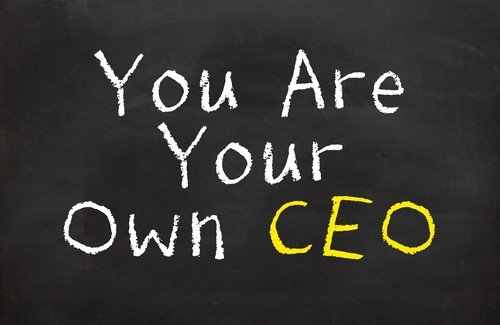
by Julia Felton | May 22, 2016
How many times have you heard an expert say “Stop working in your business and start working on your business”. Or “Start thinking like a CEO and lead your business. Stop acting like a team member”.
Conceptually all business owners I have ever met get that they need to step up and start leading their business if they are to get to the next level of success. The challenge is how to do this. But do this you must because your business won’t grow to the next level unless you the business owner up level your mindset and really start thinking like the CEO of your business.
And let’s just look at the business owner role. Are you really a business owner? According to National Statistics Office there are some 5.2million businesses in the UK, so you would think that all these people were business owners. Wrong. An incredible 75% are to my mind just self-employed experts who do not employ any team members. Sure. they are working for a business enterprise, that they own, but really the way they behave means that they are in effect working for the business, being reactive to all the circumstances that some up. That is not leadership, and that is not how a CEO behaves.
So lets look at the key differences between a self-employed expert, a business owner and a CEO.
Characteristics of a Self Employed Expert
- Highly proficient in their area of expertise (often referred to as being a great technician)
- Their view of what is achievable is limited by what they personally can do
- They have little or no leverage and are stuck trading time for money
- Very reluctant to outsource tasks or build a team
- Often can’t exceed USD250,000 in annual revenue
Characteristics of a Business Owner
- Grudgingly starts accepting they can’t do everything and so begins to strategically outsource tasks
- Adds to the team and starts leveraging other people’s time and expertise
- They often jealously guard some core areas of the business believing that only they can do this
- Usually experiences a rapid growth in both revenue and team
- Revenue typically flat lines between USD1-2 million per annum
Characteristics of a CEO
- Finally accepts they have to replace themselves in the business
- Consciously shifts their primary role to that of strategic relationship builder and rainmaker
- Limits the amount of time that they spend on service delivery to just a few key clients
- Appreciates that their role is to become irrelevant so that the business generates revenue without them
So how do you up level your mindset and start to become the CEO of your business. Here are three things that you can start with:
CEO Mindset #1: Don’t Make Business Decisions based Primarily On Your Personal Preferences
As you step up to become the CEO of your business you need to learn to start making decisions not based on what you personally like but what would be best for the business. For example, choose a business logo and brand colours that resonate with your target audience rather than ones that you really like. Travel to events where your clients will be hanging out, even it is inconvenient for you. Don’t confuse business expenses and investment decisions. The former waste money whereas the latter will over time generate you a return. For example, the decision to invest in a CRM systems won’t feel like an expense when it is delivering you qualified, automated leads every day.
CEO Mindset #2: Don’t Let Outside Factors Impact Your Ability To Take Action
In business there are always a myriad of outside influences that can impact what we do, however CEO’s don’t let outside circumstances take them off track. A classic example of this would be the business owner saying that they will invest in that sponsorship deal as soon as they have secure a new piece of work. Well if you know that sponsorship investment is absolutely the right thing for your business to do and will get you in front of your ideal client. Then surely you should make that investment regardless of whether you secure the new piece of work. In fact just by making the decision to invest and begin hanging out with your ideal client, you may will find that the new piece of work appears as if by magic.
CEO Mindset #3: Don’t Stick Your Head In The Sand and Avoid Addressing Important Issues
As the CEO it is your role to have courageous conversations with your team members, even if it feels uncomfortable. You also need to ensure that key issues in the business are addressed such as having contracts in place, making sure your accounts are completed and other legal obligations. Now I appreciate that some of these things might not fall into your area of expertise but as the CEO it is your responsibility to manage these operations and ensure that your business is compliant at all times. As the CEO you must always be thinking “What is the best for the business”, even if that answer is outside your comfort zone.
You’ll be amazed at what happens when you start stepping up and becoming the CEO of your own business how that has ripple effect on everyone around you. Your new found leadership inspires others to also up level their game and as a consequence business productivity and profitability results.
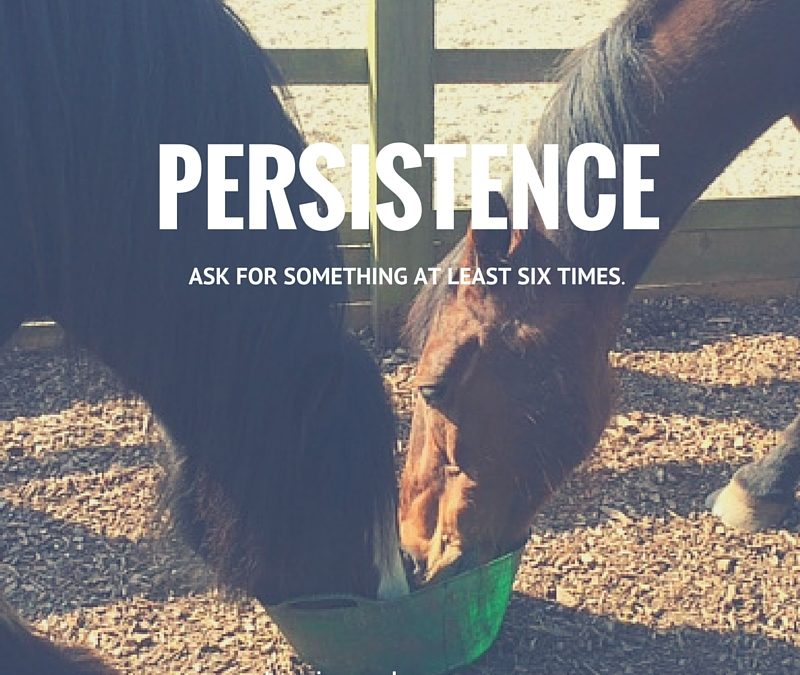
by Julia Felton | May 18, 2016
This week’s daily dose of inspiration is inspired by my pony Thistle and how she behaved this morning. Every day I take the horses breakfast and as usual the ponies – Bracken and Thistle – finished first. (Partly because they are greedy and wolf the food down but also to be fair they do get smaller portions!).
Well after Thistle had finished her breakfast this morning she approached Toby and asked him if she could share his breakfast. Toby’s initial response was NO WAY. He barred his teeth and then moved his hind quarters round and tried to kick her. However, undeterred Thistle kept asking and after some time Toby finally acquiesced and let her breakfast with him.
Watching Thistle’s persistence in asking for what she wanted got me thinking about business and how often we don’t persist in asking for what we want. How often do you ask a potential client for the sale and just because you don’t get an answer you assume that they don’t want your services? If you are like me, I know I am guilty of thinking that. And then you know I simply don’t follow up with that prospect again.
This is a foolhardy strategy and one that means that I am always out seeking new prospects. What if those clients were right there under my nose but I just hadn’t asked them enough times if they needed my services?.
One of the joys and also challenges of the times we live in is the abundance of information we have at our finger tips. This is both a blessing and a curse, as if often means we are drowning in data and information. What if that prospect actually wanted your services but had just missed your email. What a wasted opportunity for both of you.
In a previous blog post Persist as The Money is in the Follow Up I share how 80% of sales are made on the 5th to 12th contact and this reminded me of what my mentor Clinton Swaine told me: “Ask six times for exactly what you want”. Just because you get a No the first time doesn’t means that you will always get a No. Thistle demonstrated this just perfectly this morning. She knew exactly what she wanted and kept asking until she got it.
And increasingly I am finding in business that people rarely respond to a first request. In fact a know a number of people that actually won’t respond to a first request. They know that if the person is serious they will ask again, and if they fail to then they know that either that person wasn’t committed to wanting to work with them. I find that quite a sobering thought!.
So I’d love you to think about the number of times you have failed to ask for what you wanted at least six times. Make a list of all these people and situations and then reach out to these people again. They might just be waiting to hear from you. After all persistence is the key to success. So be tenacious and you might surprised at the results.
So what are you waiting for. Get into action now and let me know in the in the Facebook group how you get on.
